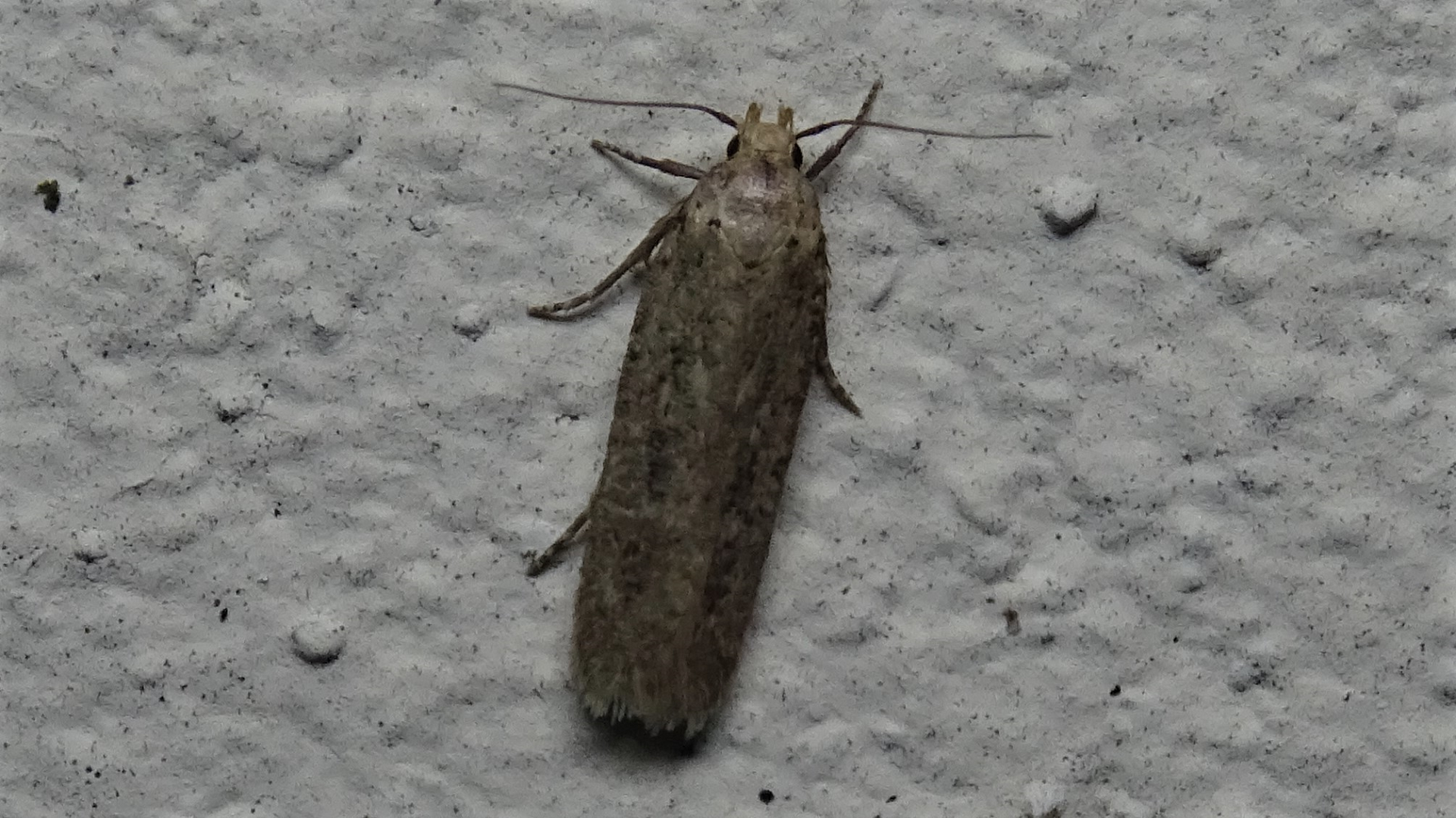Moths are a group of insects that includes all members of the order Lepidoptera that are not butterflies. They are an important part of the food chain providing a vital food source for birds and bats.
31.001
Oak Longhorn Carcina quercana
The Oak Longhorn has antennae longer than the body. It lives in mature oak and beech woodland and is normally seen in July and August. This species feeds on various deciduous trees. Previously known as the Long-horned Flat-body.
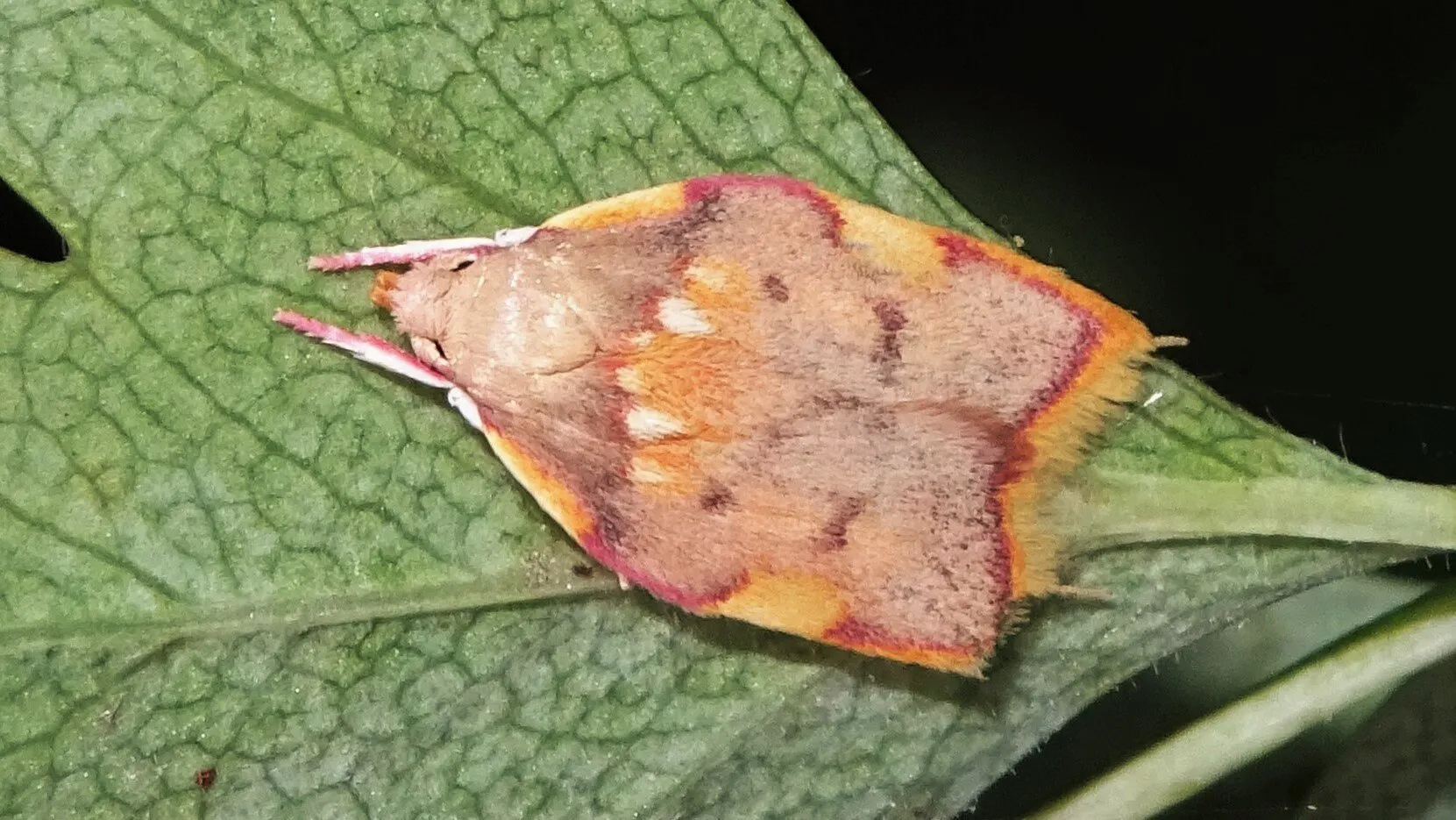
#
32.031
Hemlock Moth Agonopterix alstromeriana
Previously known as the 'Brown-spot Flat-body', but renamed as the 'Hemlock Moth'. As the new name implies it is usually found around hemlock which is the larval foodplant.
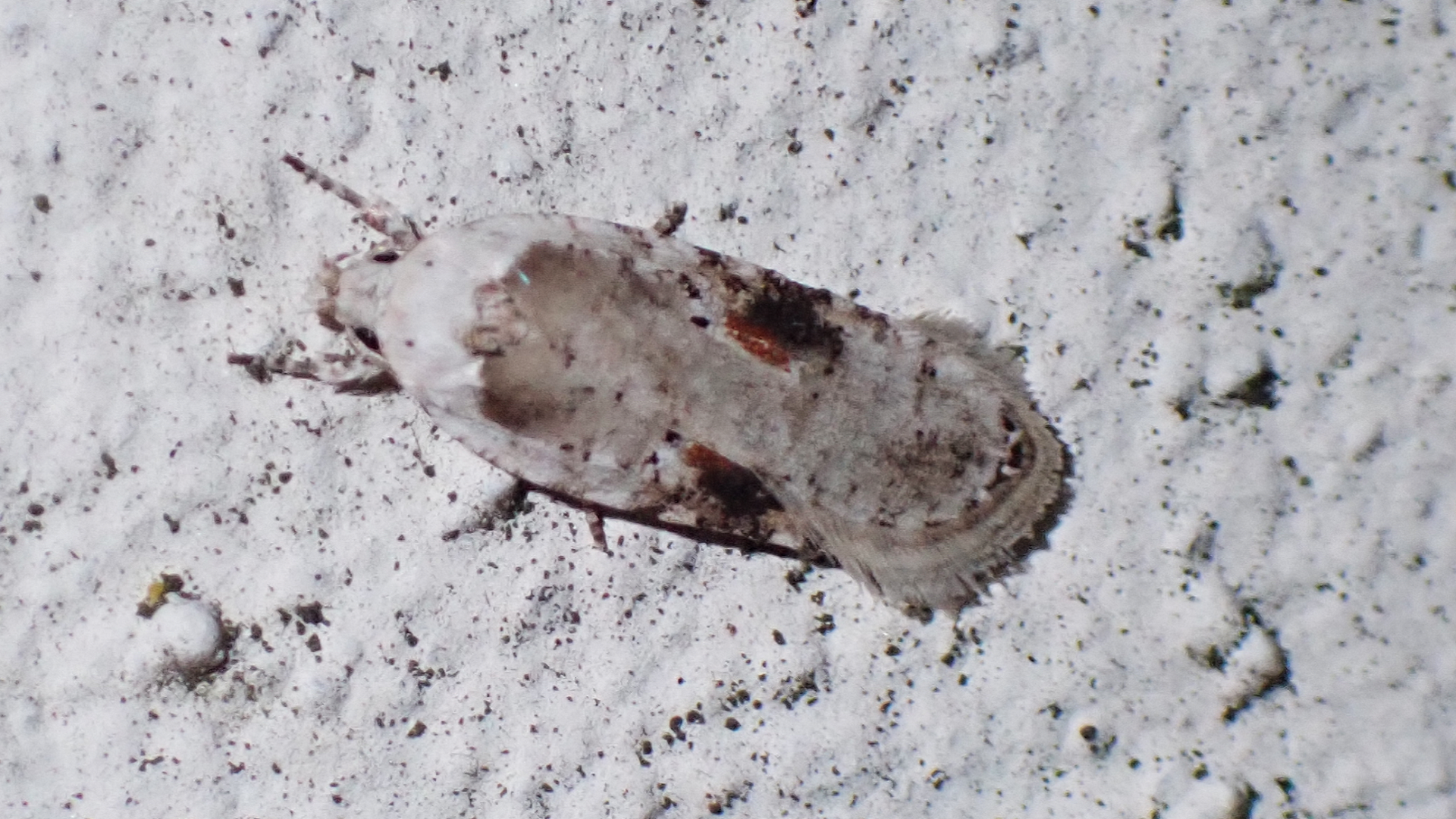
#
35.xxx
Common White-barred agg. Aproaerema taeniolella agg.
This is one of several species belonging to the family Gelechiidae that are very similar in appearance. The family sometimes referred to as 'Twirler moths' are usually tiny with narrow fringed wings. A. taeniolella is easily confused with A.larseniella and A. cinctella so this group is often treated as an aggregate.
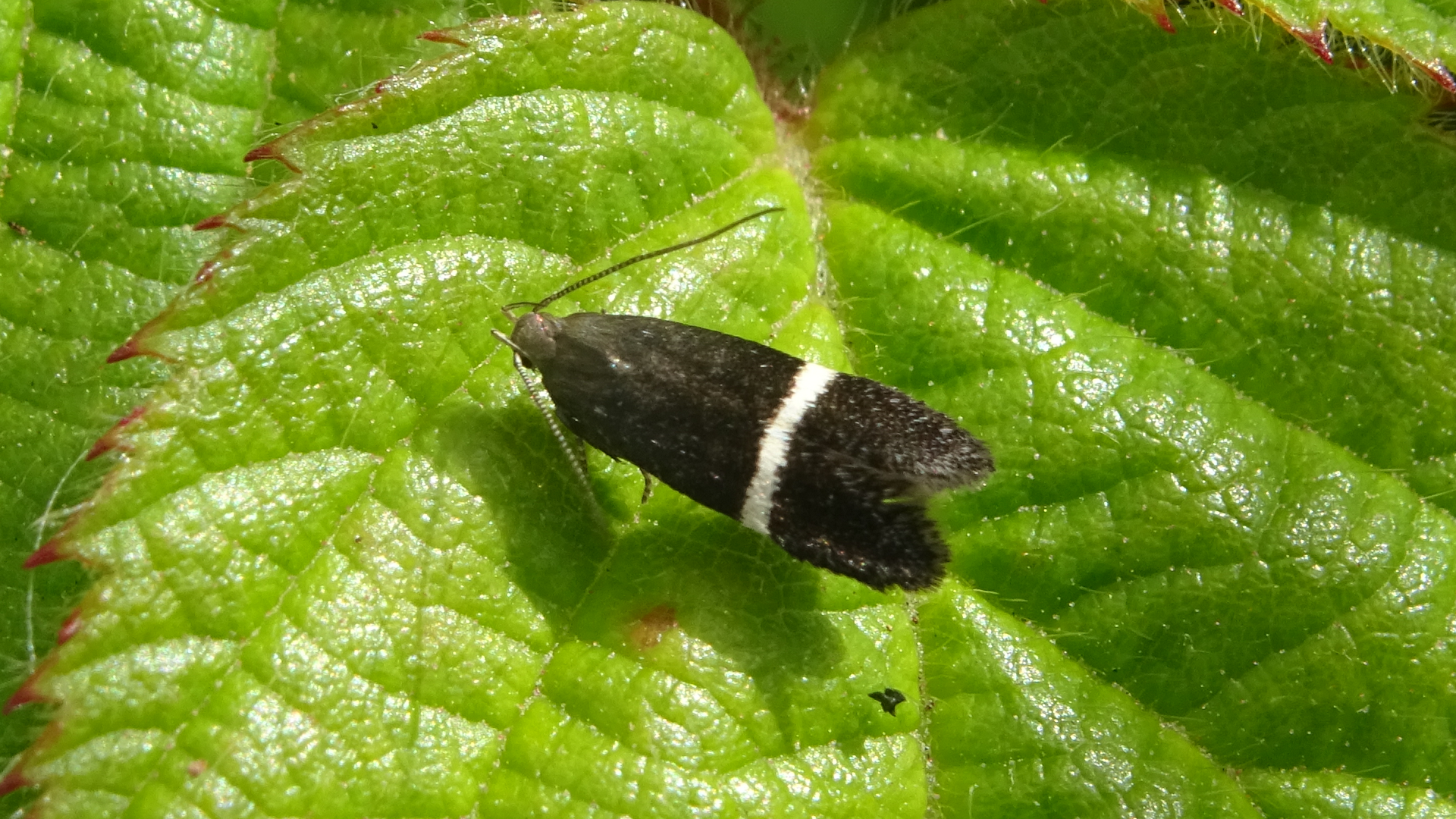
#
37.xxx
Coleophora Case-bearer Coleophora agg.
Some species in the genus Coleophoridae are difficult to tell apart because they bear a similarity to each other. Most in the genus have larvae that initially feed on seeds, flowers and leaves. When the larvae get larger they construct distinctive silken cases often using plant material. Most have specific host plants; discarded larval cases are often found on affected plants. This record has been treated as an aggregate.
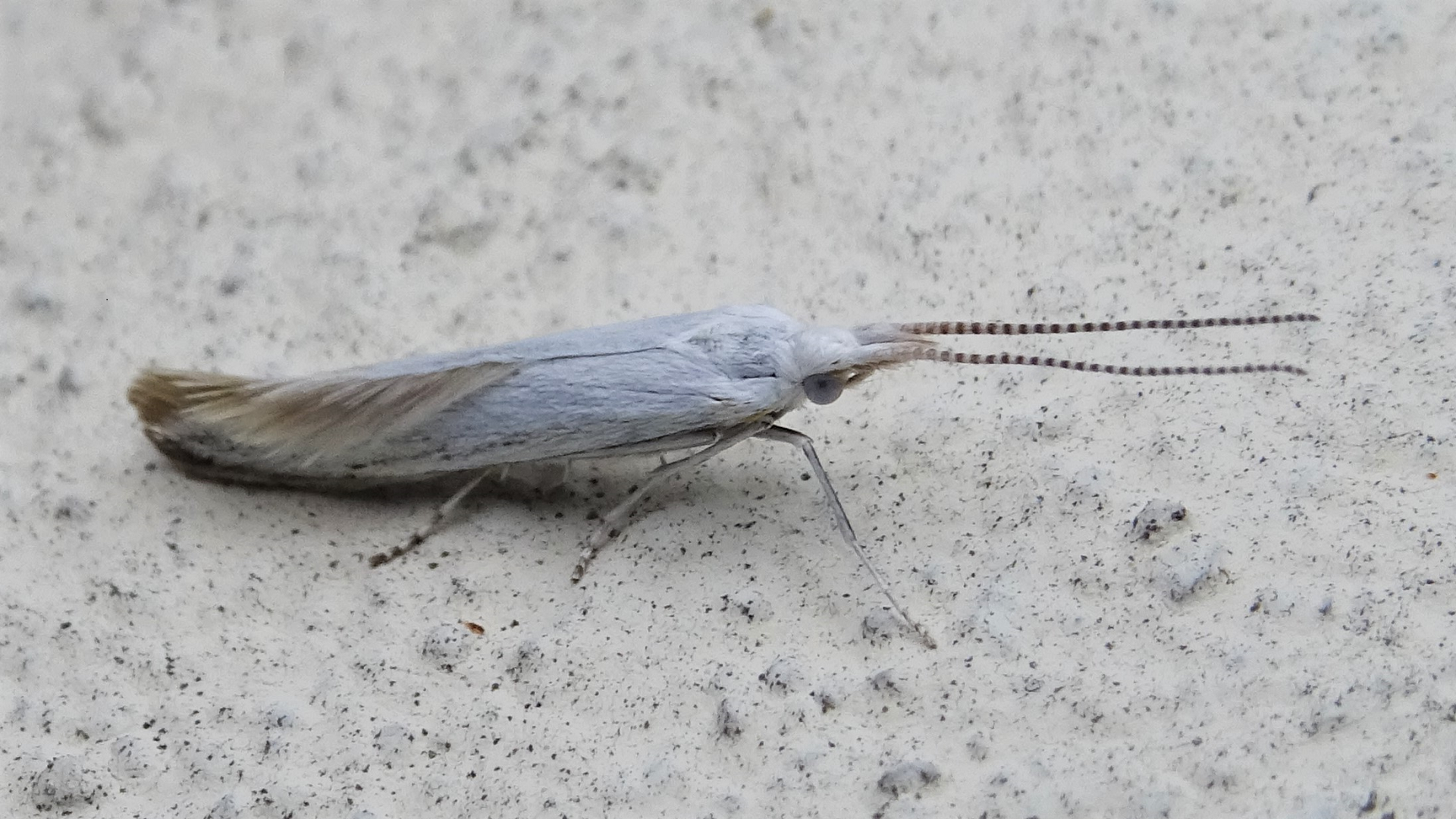
#
37.047
Tare Case-bearer Coleophora amethystinella
Bronze-coloured micro-moth easily identified by its orange eyes and eyelashes. Not recorded much in the past but numbers now appear to be on the increase. Found during May and June in meadows that contain its foodplant Smooth Tare. Previously known as the 'Coast Green Case-bearer'.

#
38.004
Silver Grass-miner Elachista argentella
The Silver Grass-miner flies from May until August and is often disturbed in grassland areas. Its larvae feed on various grasses. Previously known as the Swan-feather Dwarf.
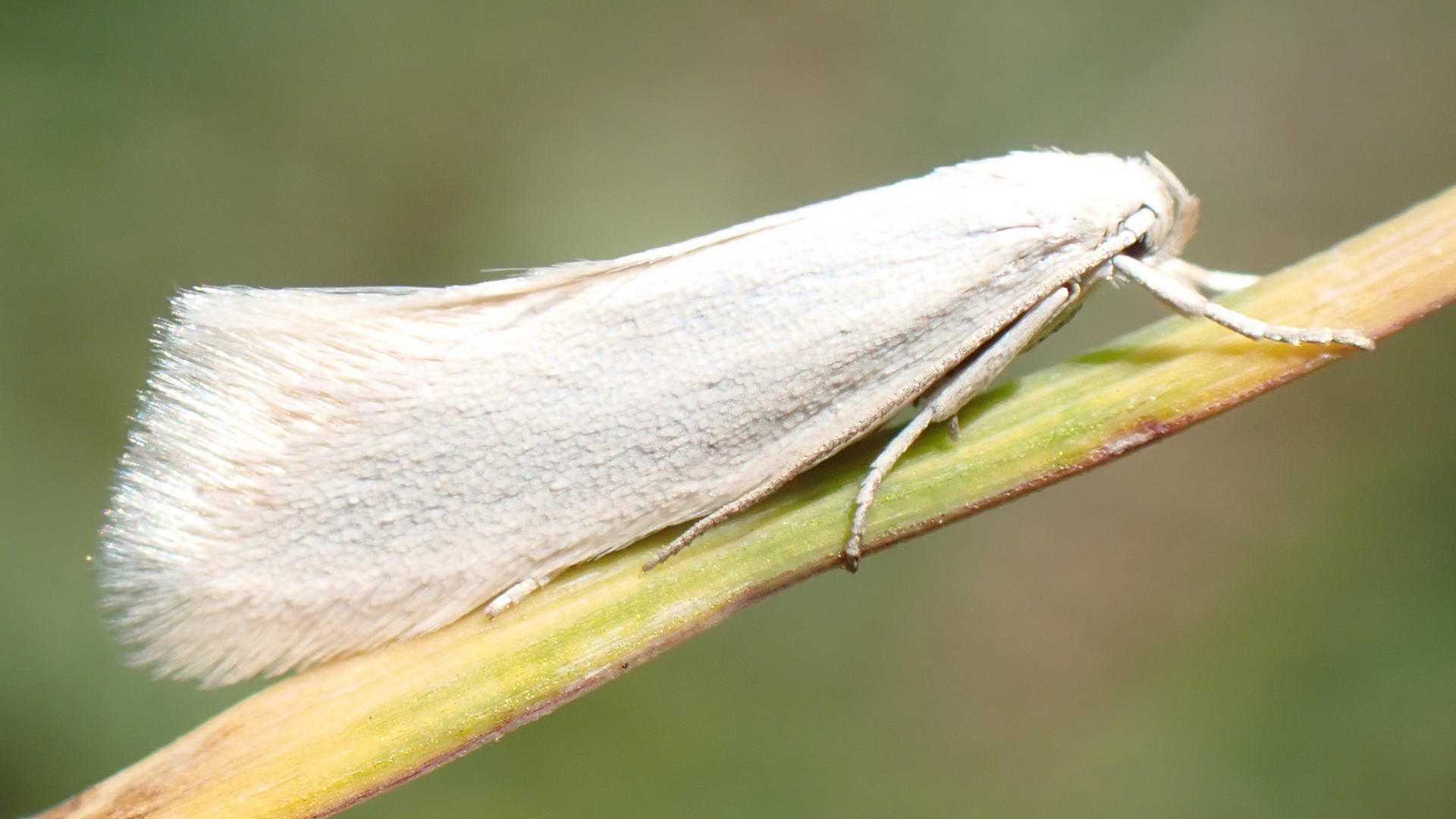
#
40.004
White-headed Mompha Mompha propinquella
Common woodland species with raised scale-tufts. It flies during nighttime from June until September and is sometimes attracted to light. Its caterpillars feed on various willowherbs. Formerly known as 'Marbled Mompha'. It has a 12mm wingspan.
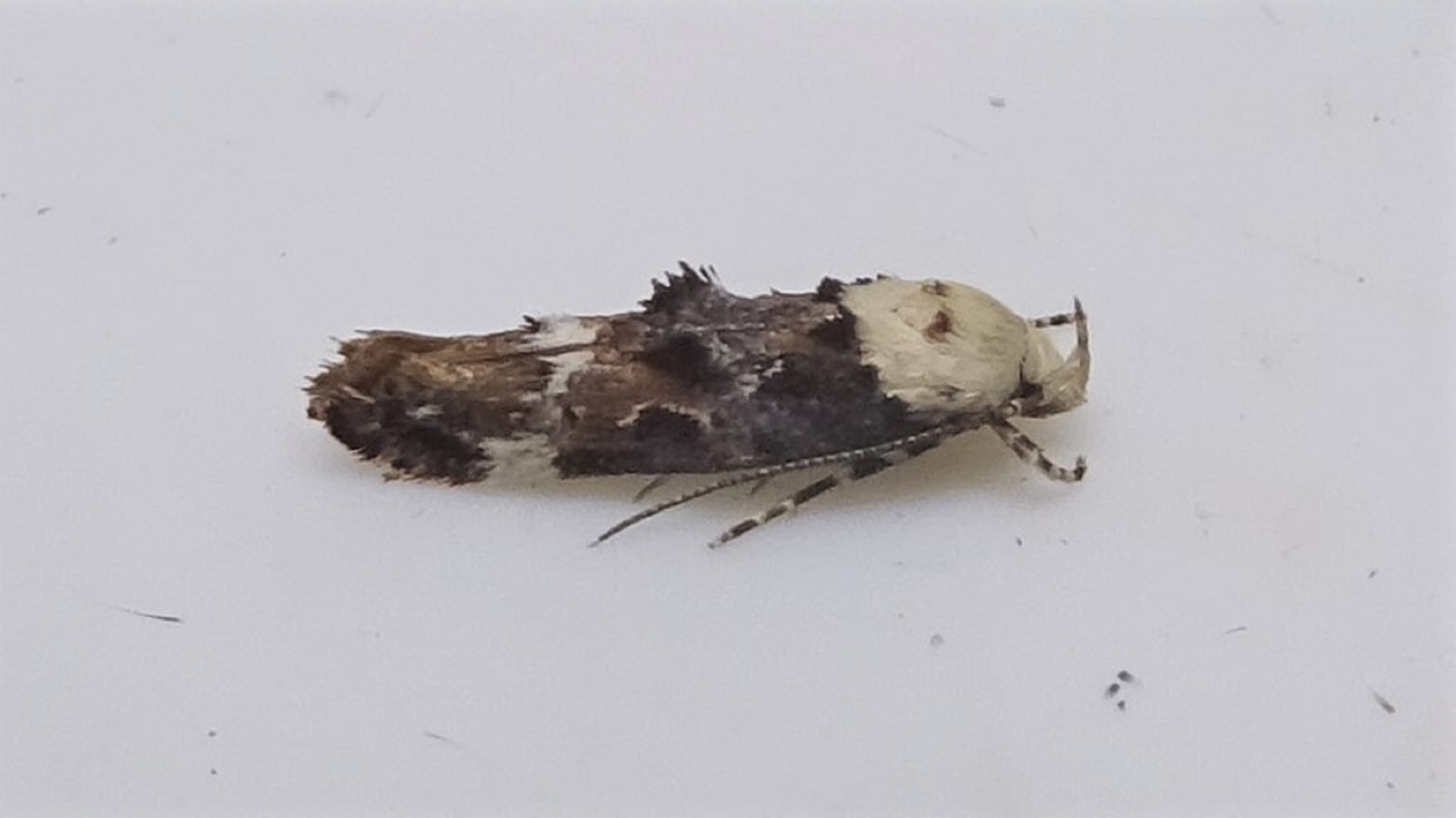
#
40.008
Garden Mompha Mompha subbistrigella
Common micro-moth that can be found most of the year. It has a preference for damp locations and overwintering in garden sheds. Its larvae feed within the seedpods of various willowherbs.
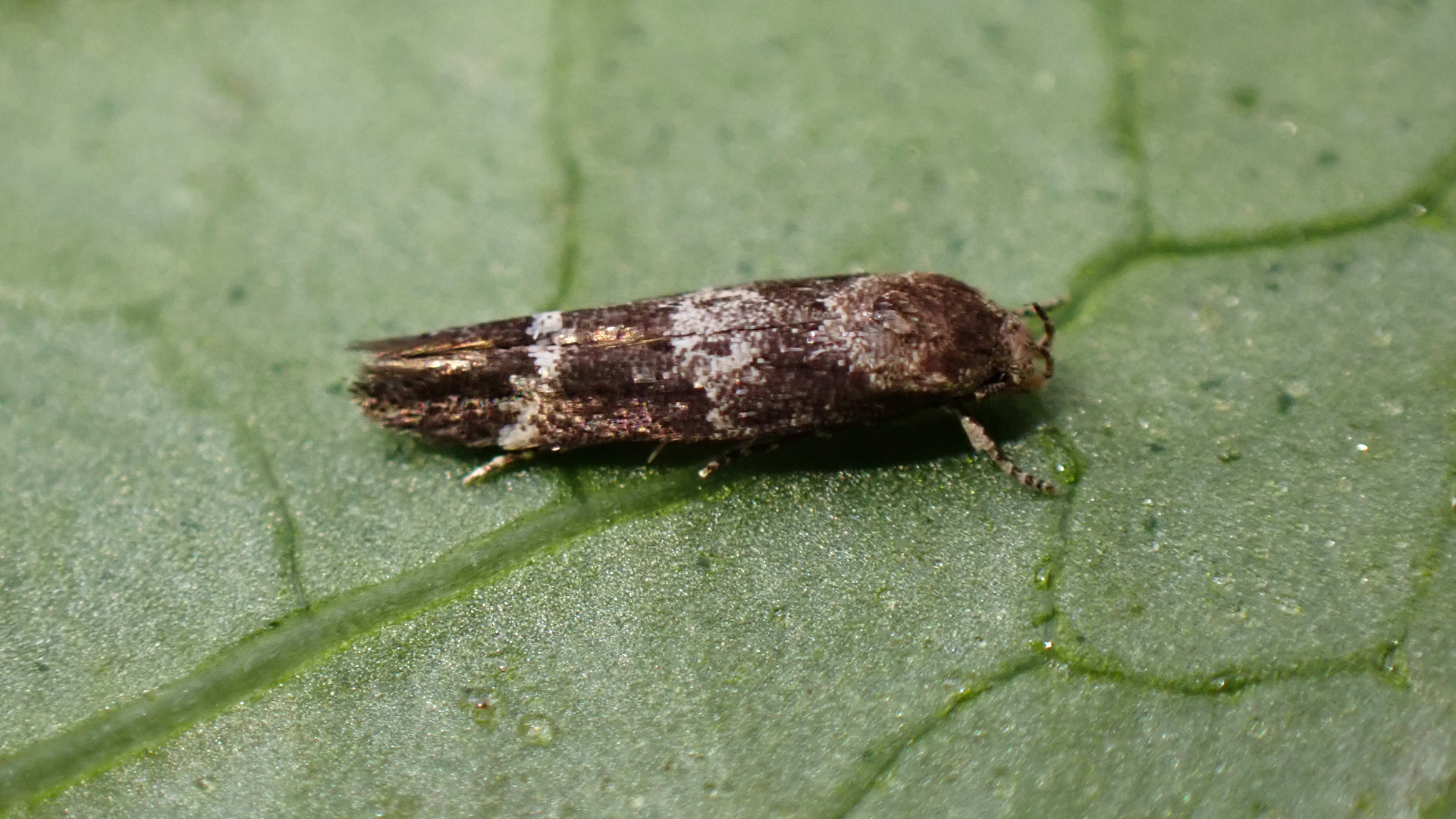
#
41.002
Common Masoner Blastobasis adustella
This species is variable with light and dark forms. There is usually a 'X' marking when viewed from above which assists with identification. Found in a range of habitats including woodland, heaths and gardens from July to September. Previously known as the 'Dingy Dowd'.
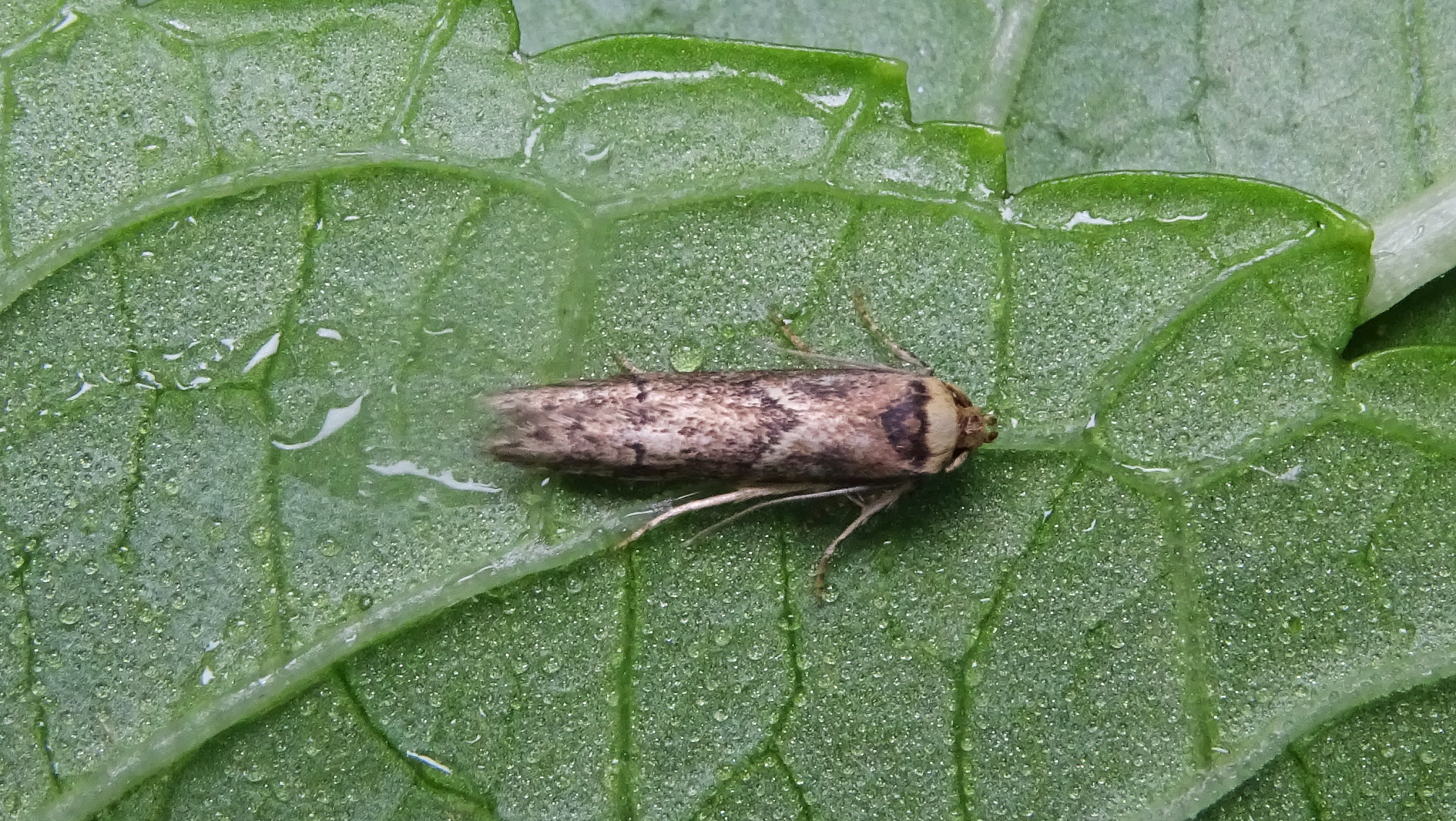
#
© hainaultforest.net. All rights reserved.


